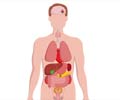Researchers have found reasons which may help explain on how certain disease-causing gene mutations are passed from mother to child.

Shoukhrat Mitalipov, Ph.D., who previously developed a method for preventing the passing of mitochondrial genetic mutations from mother to infant in 2009, directed the research.
This latest breakthrough, which was conducted in rhesus macaque monkeys because of their similarity to humans, demonstrates the specific stage of early embryonic development when genetic mutations are passed from mother to fetus. This stage, referred to by scientists as "the bottleneck," occurs when an early embryo called blastocyst, transitions into a fetus.
To conduct the research, Mitalipov and colleagues needed to design a way to mark and track specific mitochondrial genes as they transitioned from egg, through fertilization, to embryo and then to fetus. This was accomplished by combining two separate mitochondrial genomes into one egg cell. More specifically, one-half of an egg cell from a species of Indian-continent rhesus macaque monkey was merged with one-half of an egg cell from a Chinese-continent monkey. Because these animal species have distinct mitochondrial gene sequences (like breeding two distinct species of dogs), their genetics could be tracked closely.
The microscopic manipulation of splitting and uniting two halved egg cells takes specialized skills and expertise, which the Mitalipov lab has developed over a period of several years. A link to a video explaining this process can be found in the multimedia section of this press release.
By studying the development of these joined and then fertilized eggs, scientists were surprised to see that eggs transitioned from containing a 50/50 split of genetics to a fetus that contained a nearly 100 percent either Indian or Chinese-based genome.
Advertisement
This finding raises significant questions about validity of currently methods for genetic diagnosis in early embryos, when a woman is known to carry a mitochondrial gene mutation may pass a disease to her children.
Advertisement
"The problem with this approach is that you may choose a cell that may not have mutations. But that does not mean the remaining cells in an embryo are mutation-free. Our research suggests that such approach could be flawed because diagnosis takes place prior to the stage when an offspring's mitochondrial genetics is truly established."
With this new information and with additional data gathered through further research, Mitalipov and colleagues believe that new methods for genetic diagnosis for mitochondrial disease should be located. The research also demonstrates that the Mitalipov lab's previously developed method for preventing the passing of mitochondrial mutations from mother to child is highly successful.
Source-Eurekalert















